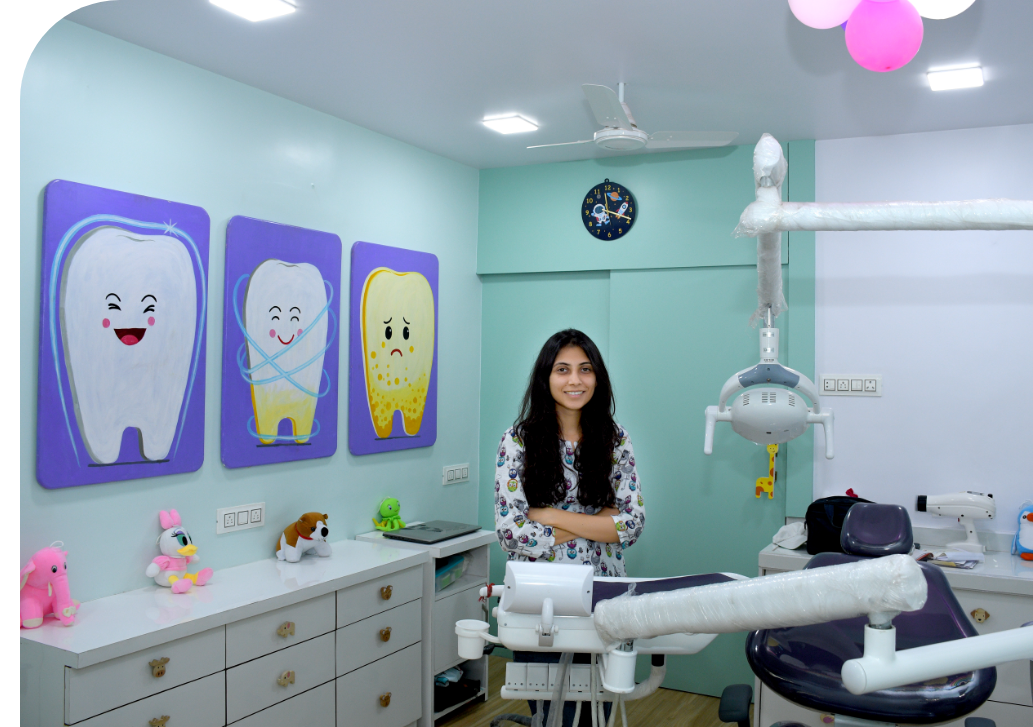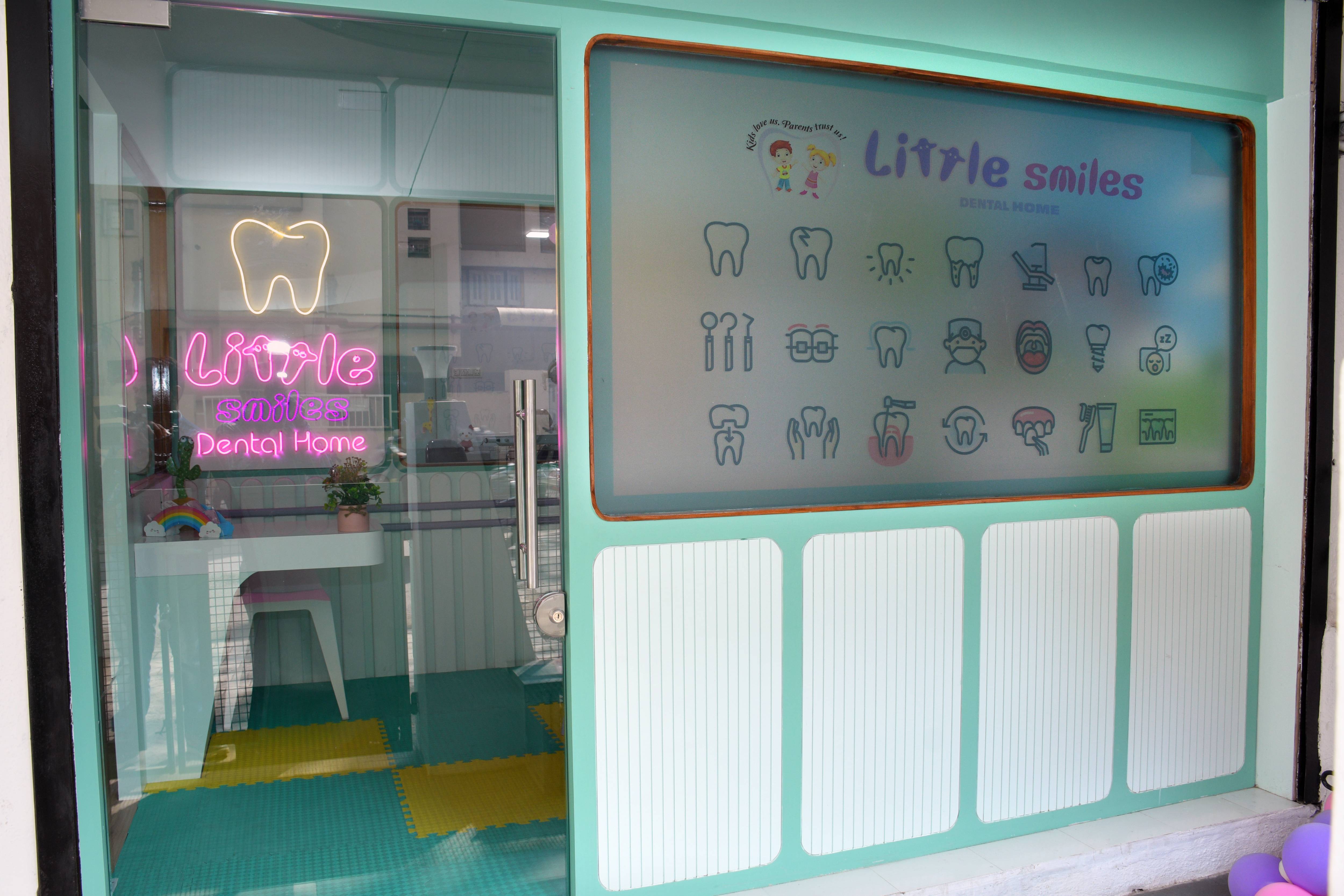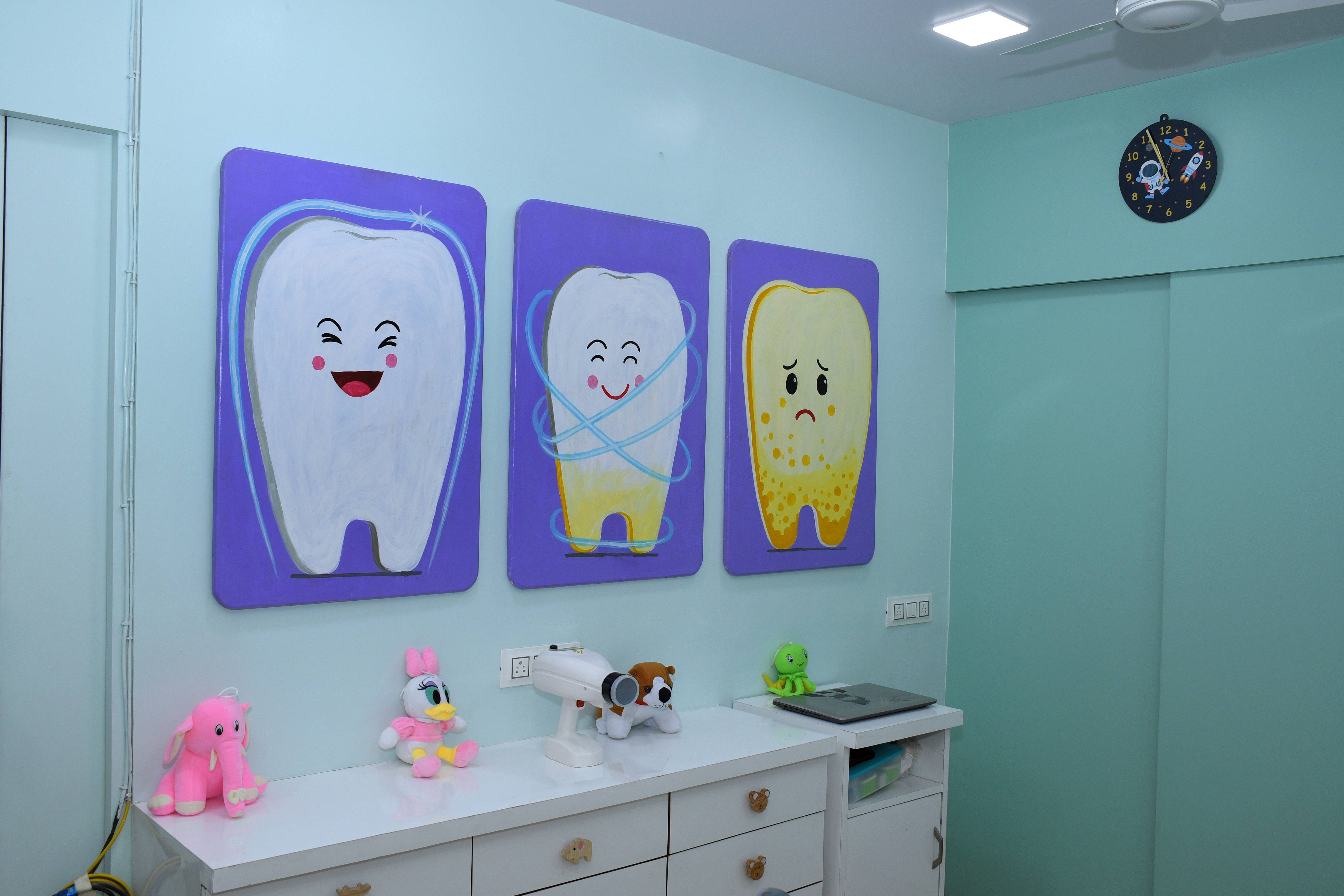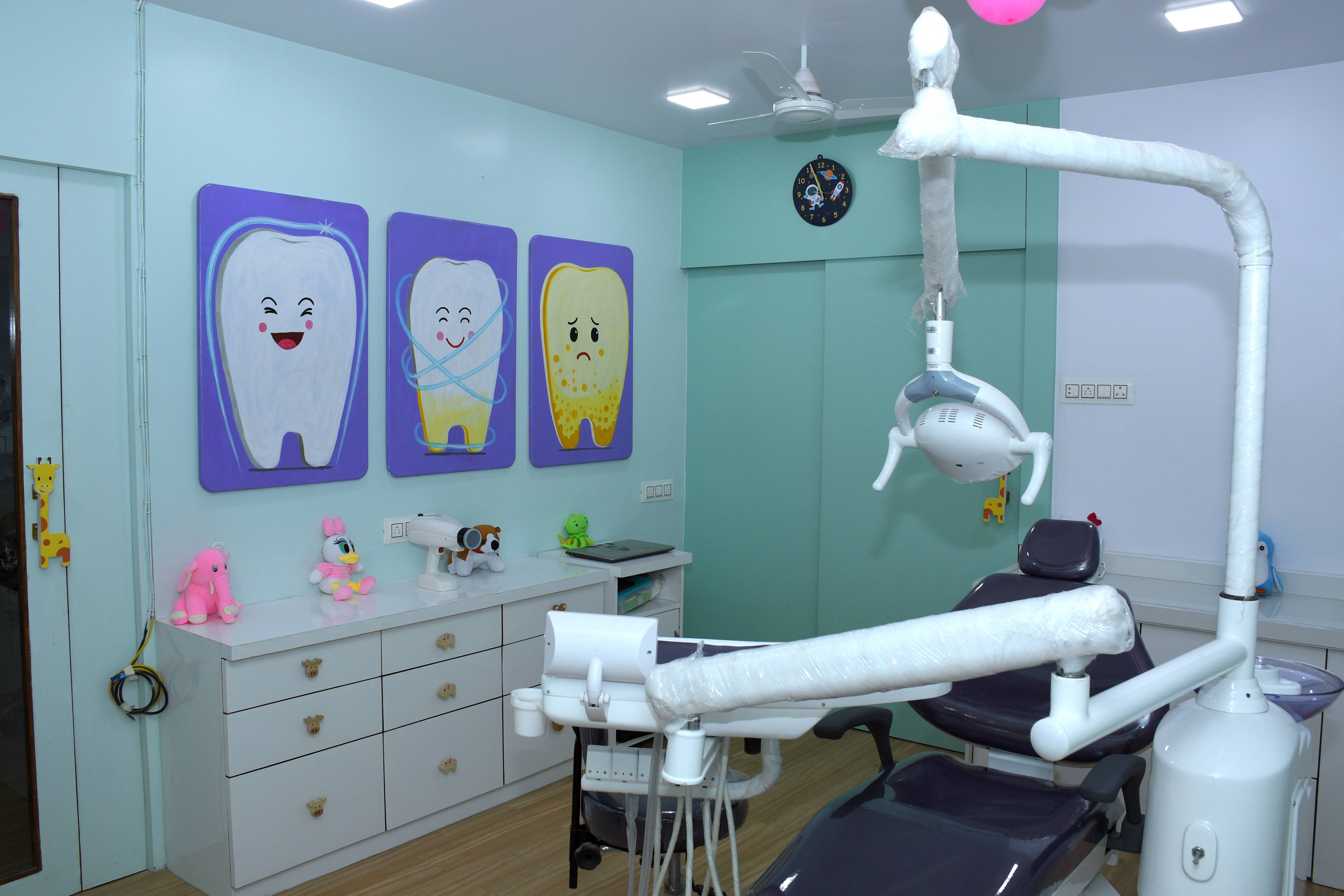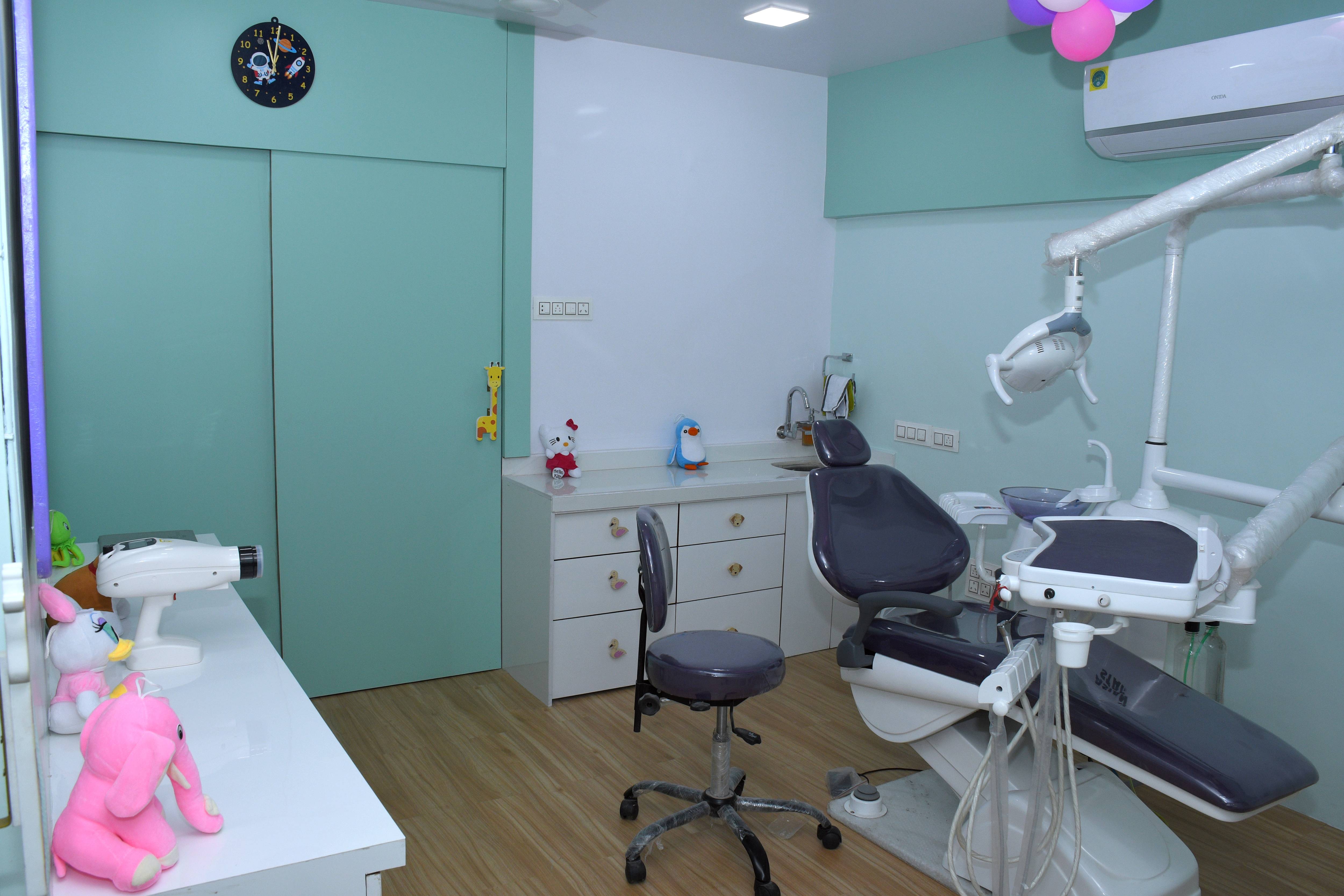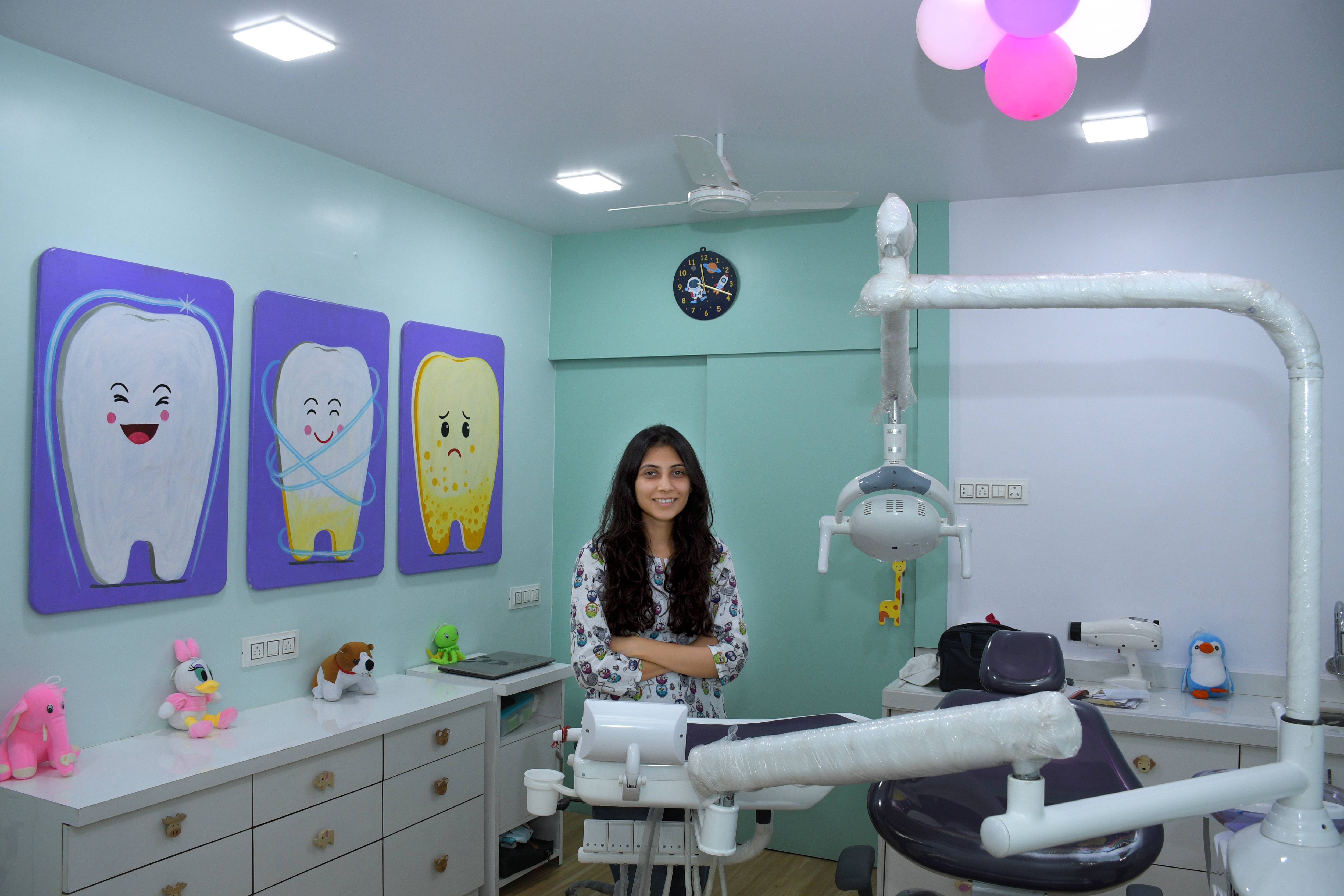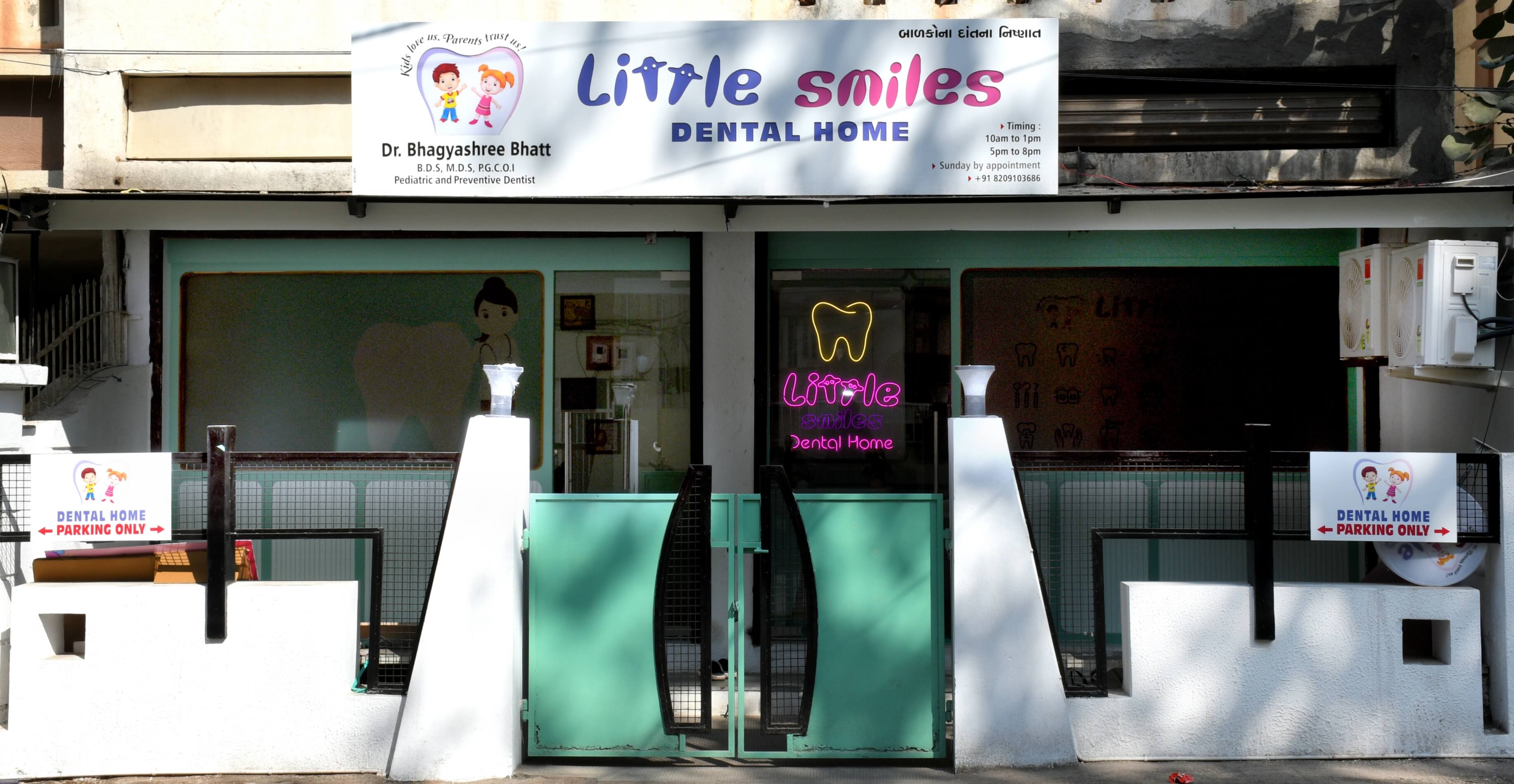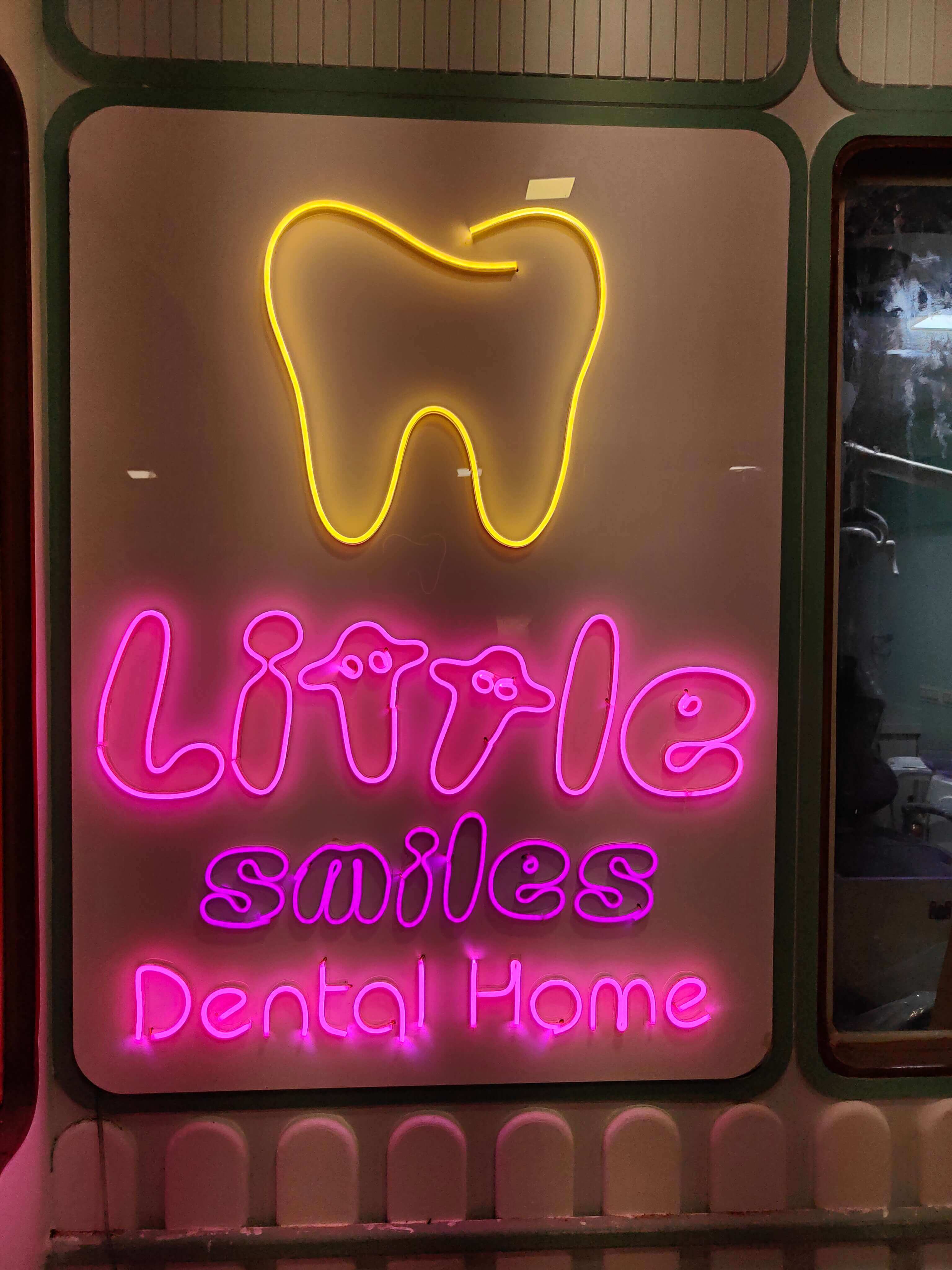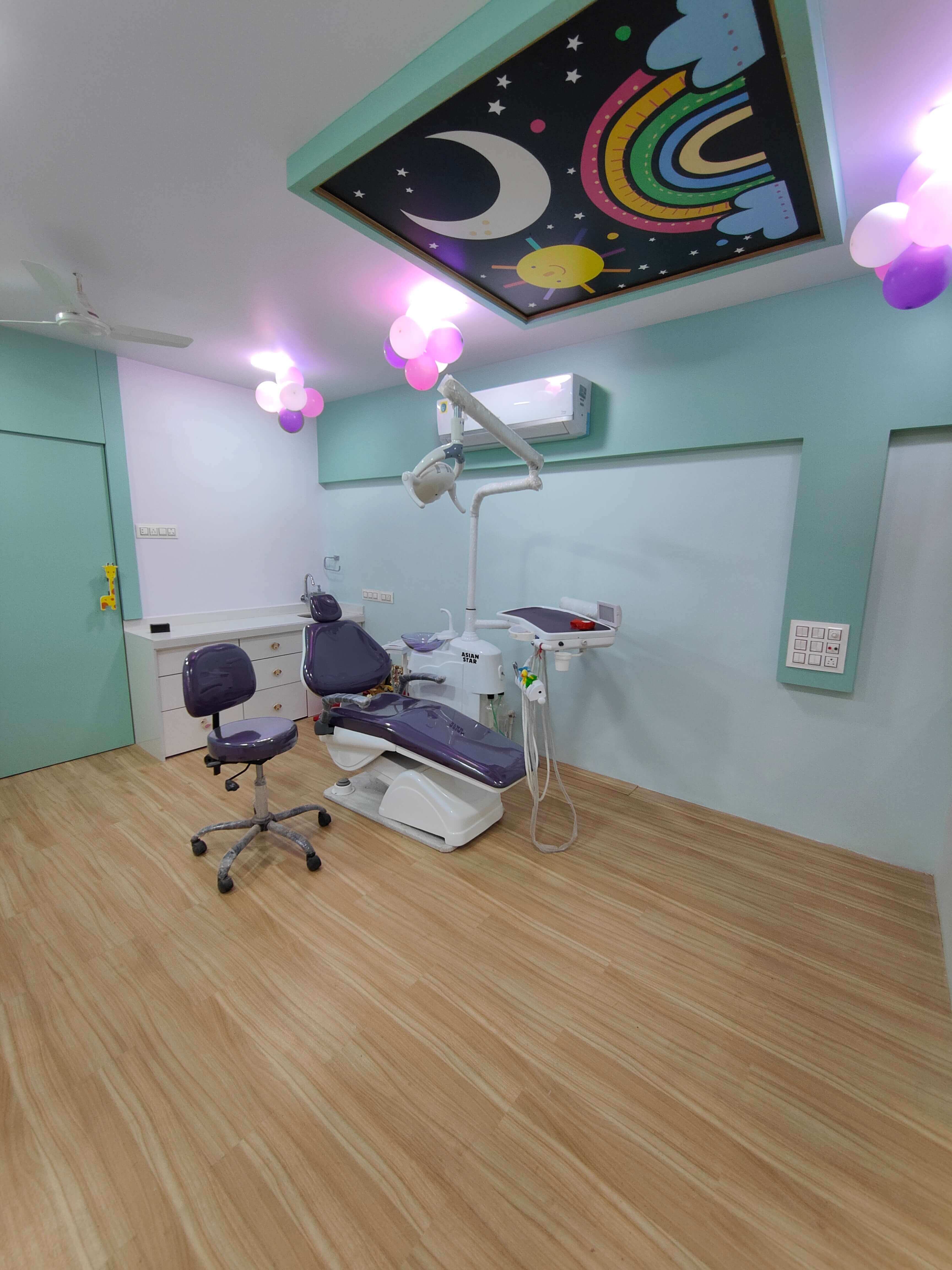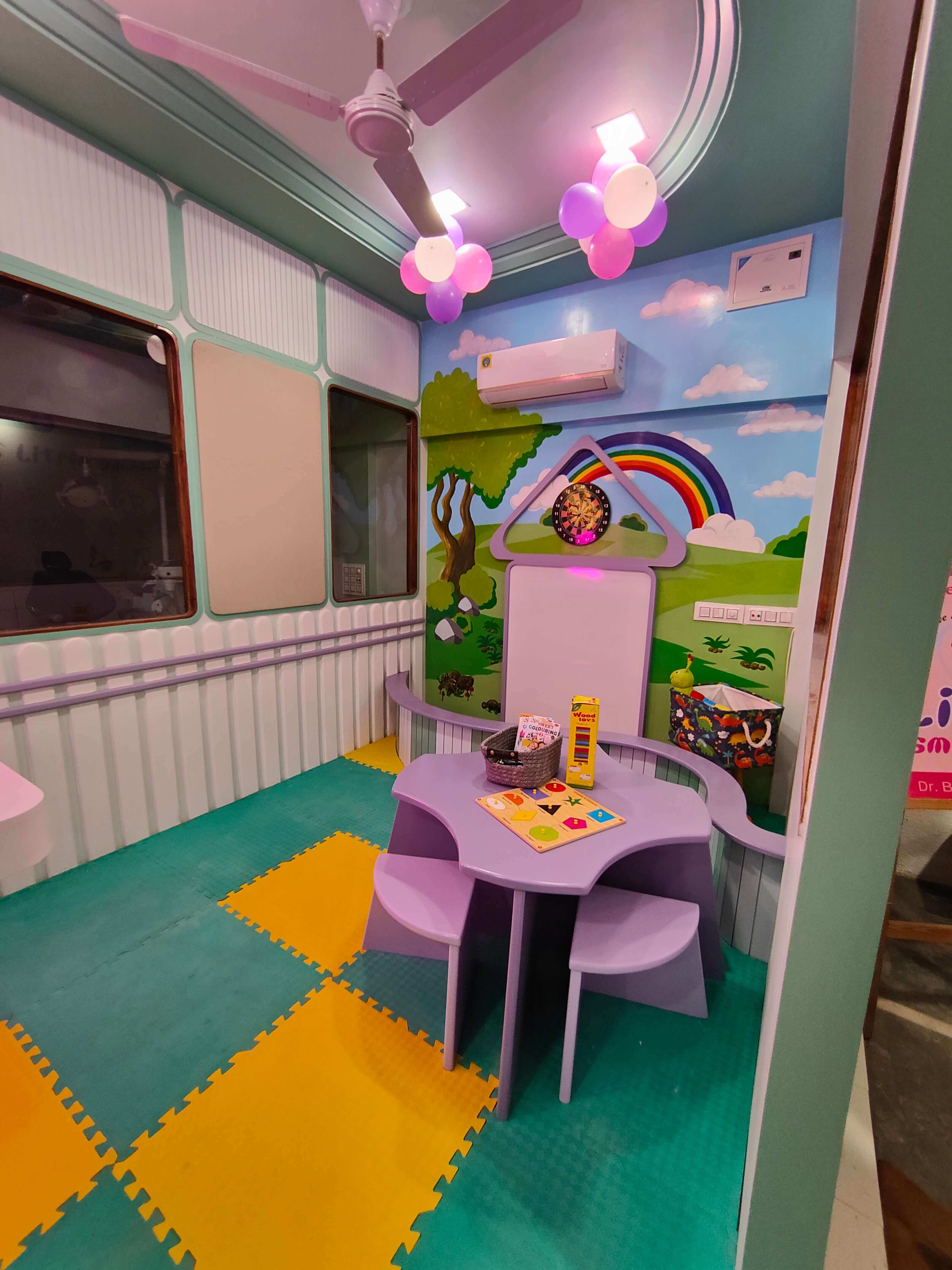
Dr. Bhagyashree Bhatt
Pediatric and Preventive Dentist
Pediatric dentistry is one of the seven recognized clinical specialties of dentistry. It includes all areas of adult dentistry that may be applied to children. However, it also includes many procedures that are specific to the peculiar needs of primary (baby) teeth and challenges of the developing child. The most significant difference between pediatric and adult dentistry is the need for dentists treating children to understand and practice sound psychological principles to allow children to have positive, relatively pain-free experiences in this important health area. Bad memories of traumatic dental therapy during childhood can influence children negatively and make them reject adequate dental care for life. The overall goal is the delivery of quality, safe dental care in an environment that is as pleasant as possible for children and that promotes a positive attitude toward oral health and future dental care.
Gallery
Specializes in
10 Dental Health Tips
for Parents...
- Talk to them about their teeth often.
- Let them watch you brush your teeth.
- Get them an age appropriate toothbrush and paste.
- Assist them While brushing their teeth until they can on their own.
- Develop in them the habit of brushing morning and at night.
- Don't give them sugary food/drink before bedtime.
- Sing or play music while they brush- make it fun!
- Make a sticker reward chart for nights they brush.
- Get a stepping to help them reach the sink,
- Have older siblings get in on the fun.
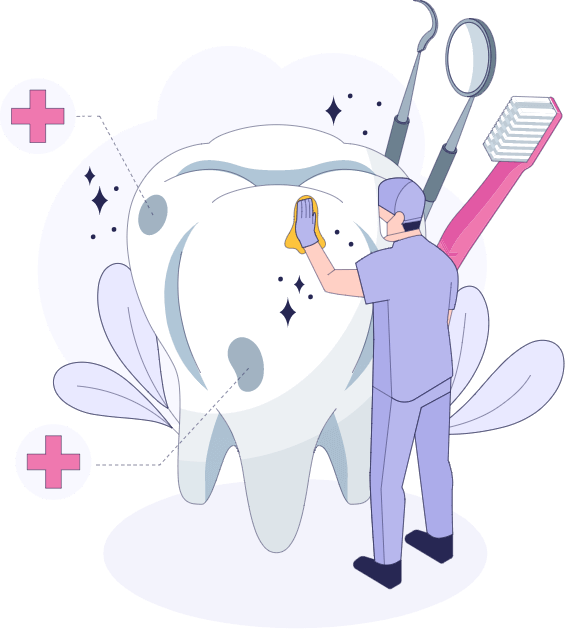

Why Pediatric Dentist
for your child ?
- Pediatric Dentist receives three years of additional training for treating children's dental problems.
- They are specialized in handling children including neonates & infants.
- Expert in providing child centric & child safe environment.
- More focused on preventive treatments.

